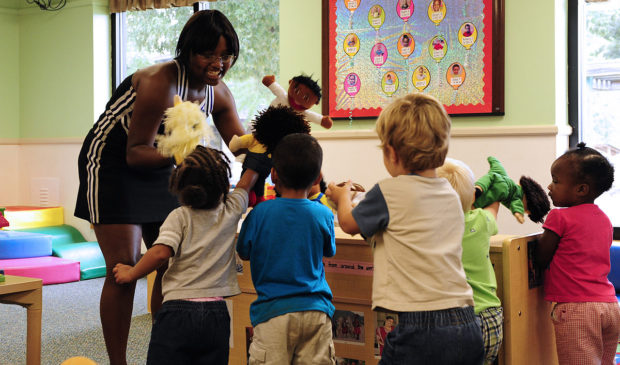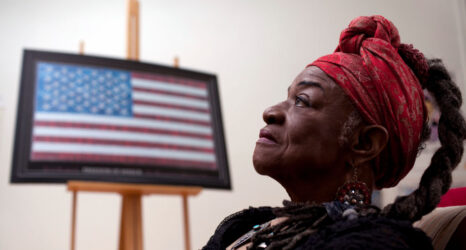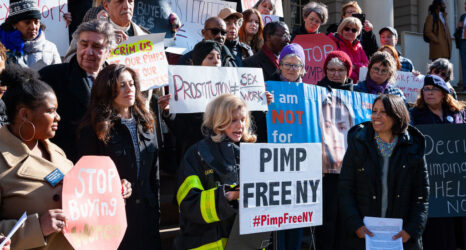Women who don’t leave medicine aren’t better or stronger than those who leave; they just often have access to different resources—among them, domestic and childcare assistance.

September was Women in Medicine Month, when we celebrate formidable and inspiring female physicians. Celebratory T-shirts, hashtags (#WomenInMedicine #WIMMonth), and events highlight how women physicians “do it all.” But each year, one group is largely neglected: the women who help us to succeed. These domestic and childcare workers include our childcare and elder care providers at home or daycare, and those who clean our homes or cook our meals. As women in medicine, we must openly discuss how critical they are to the success of our careers and support their rights to a safe workplace, where their time is valued and compensated fairly.
This conversation is critical now more than ever as record numbers of women in medicine experience burnout and are leaving medicine. But women who don’t leave medicine aren’t better or stronger than those who leave; they just often have access to different resources—among them, domestic and childcare assistance.
As female physicians, we are able to pursue our educational and career goals, sometimes even achieve “work life balance,” due to the labor of these women—disproportionately women of color and immigrant women—who we hire to do the domestic duties traditionally seen as “women’s work.” It is unknown exactly what percentage of female physicians rely on domestic workers, but it is thought to be high given our work involving overnight, irregular and long hours that extend beyond the traditional 9-to-5. This aligns with our own experiences and those of our colleagues.
Publicly recognizing the invaluable contribution of these workers is paramount for advancing their status in the U.S. workforce, as well as broadening our conversations about the demands of working parenthood as physicians.
Highlighting the importance of domestic workers’ contribution, we help to ensure they receive adequate rights and compensation for their work—not a current reality. Only 10 states and two cities have passed domestic bill of rights and protections. While we live in one of these states, domestic workers continue to be poorly paid, lack benefits and economic security, and are susceptible to mistreatment and abuse. Childcare workers should see higher wages go hand in hand with non-wage benefits like paid leave and health insurance.
Given our career successes are dependent on this critical labor, we feel that every female physician and professional who employs a domestic worker should educate themselves on the state and national efforts to mandate safe work environments and a living wage. We must become allies rather than simply watching from the sidelines—amplifying their voices and supporting their cause.
We also need to be honest about our experiences rather than advance a false notion that we alone can maintain our careers, raise our children and keep the house running. None of us could work without help. One of us remembers returning from a long day seeing patients and finding her nanny comforting her sick 6-month-old with the affection of a loving family member, and in that moment, realizing that this nanny wasn’t just “doing a job.” This kind of dedication is a major reason why all of us are able to remain full-time physicians through our children’s early years, despite the many forces contributing to women leaving medicine.
Shining a light on domestic and child workers’ contributions can also allow conversations about the needs of all working parents. Institutions should destigmatize flexible work hours and locations, consider daycare options at or near work, and promote programs to subsidize care of children and elders at home. Larger policy shifts around universal childcare are also essential.
Part of the hesitancy to acknowledge the existence and importance of domestic and childcare workers may come from reluctance to acknowledge our privileges, that we actually can’t do it all, or that somebody else may do some things better. Yes, women in medicine face barriers that our male counterparts may not experience—such as delayed or missed opportunities for career advancement—but most are privileged to be able to afford the kinds of care and help at home that other women cannot. Many of us also lean on the help of generous parents, in-laws, spouses and friends who have retirement funds, savings and job flexibility that allows them to lend an extra hand.
Some women in the entertainment industry have broken the mold and spoken up about their nannies. Comedians Tiny Fey and Amy Poehler rapped about their nannies on Saturday Night Live and thanked them in award acceptance speeches. TV producer and author Shonda Rhimes devoted a segment of her book to her nanny—but this is far from commonplace, especially in medicine.
So this September, as we don our T-shirts and use our hashtags, let’s support the domestic and childcare workers who daily give us the freedom to pursue the professional successes we are celebrating. We can act now by urging our colleagues in medicine and other professions to support the National Domestic Workers Bill of Rights to ensure all domestic workers access to a safe workplace. Raising the status of the workers who help us is critical to the next generation of women pursuing careers in medicine.
U.S. democracy is at a dangerous inflection point—from the demise of abortion rights, to a lack of pay equity and parental leave, to skyrocketing maternal mortality, and attacks on trans health. Left unchecked, these crises will lead to wider gaps in political participation and representation. For 50 years, Ms. has been forging feminist journalism—reporting, rebelling and truth-telling from the front-lines, championing the Equal Rights Amendment, and centering the stories of those most impacted. With all that’s at stake for equality, we are redoubling our commitment for the next 50 years. In turn, we need your help, Support Ms. today with a donation—any amount that is meaningful to you. For as little as $5 each month, you’ll receive the print magazine along with our e-newsletters, action alerts, and invitations to Ms. Studios events and podcasts. We are grateful for your loyalty and ferocity.
Up next:





